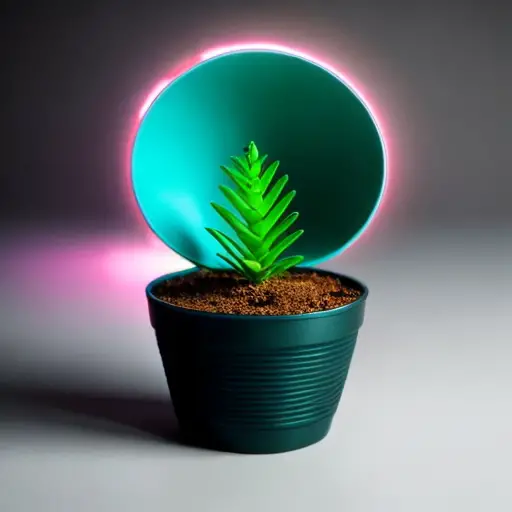Nurturing Nanouk: Essential Care Tips
Alright, fellow plant enthusiasts, gather 'round because today we're diving into the world of Nurturing Nanouk: Essential Care Tips! Now, taking care of a nanouk plant may seem like a walk in the park, but trust me, this little guy can be a bit of a diva. First things first, you need to find the perfect spot for your nanouk. Think of it as a plant version of Goldilocks - not too much sun, not too little, just the right amount of bright, indirect light. Next up, watering. Now, this is where things get tricky. Nanouks are like the Goldilocks of the plant world, too. They don't like their soil to be too dry or too soggy, so finding that sweet spot of moist but not drenched is key. And finally, let's talk about humidity. Nanouks love a little misting action, so grab your spray bottle and give them a spritz every now and then. Remember, folks, with a little love, a dash of patience, and maybe a sprinkle of plant magic, your nanouk will thrive and become the star of your indoor jungle!
Creating the Perfect Environment for Nanouk
An interesting fact about taking care of a Nanouk plant is that it thrives in bright, indirect light but can also tolerate lower light conditions. This makes it a versatile houseplant that can be placed in various locations within your home.
Picture this: a lush oasis in your living room, where your nanouk plant reigns supreme. Creating the perfect environment for your green companion is like setting the stage for a botanical masterpiece. First off, let's talk temperature. Nanouks prefer a cozy atmosphere, so keep them away from any drafty windows or chilly corners. Next, let's set the mood with some ambient lighting. Nanouks adore bright, indirect light, so find them a spot where they can bask in the gentle glow of sunshine without getting scorched. And last but not least, let's talk about companionship. Nanouks thrive in the company of other plants, so don't be shy to introduce them to their leafy friends. With a little attention to detail and a touch of green-thumb finesse, you'll have the perfect environment for your nanouk to flourish and become the envy of all your plant-loving pals!
Watering and Moisture Management for Nanouk

Watering and moisture management are crucial aspects of caring for your beloved nanouk plant. This little beauty has a delicate relationship with water, so it's important to get it just right. First things first, let's talk about the golden rule of watering: consistency is key. Nanouks prefer a regular watering schedule rather than sporadic drenching. Aim to water your nanouk when the top inch of soil feels slightly dry to the touch. This will ensure that the roots stay happy and hydrated without becoming waterlogged.
Now, let's dive into the nitty-gritty of moisture management. Nanouks are like the Goldilocks of the plant world - they don't like their soil to be too dry or too soggy. Finding that sweet spot of moist but not drenched is essential. When watering, make sure to thoroughly saturate the soil, allowing excess water to drain out. Avoid letting your nanouk sit in a saucer of water, as this can lead to root rot. Remember, moderation is key when it comes to watering your nanouk.
In addition to regular watering, nanouks appreciate a little extra humidity. These tropical darlings thrive in a moist environment, so consider misting their leaves with water every now and then. You can also place a tray filled with water near your nanouk to create a mini humid microclimate. Just be sure not to let the plant's roots come into direct contact with the water, as this can lead to overhydration.
Lastly, keep an eye on your nanouk's leaves for any signs of moisture stress. If the leaves start to droop or turn yellow, it may be a sign of overwatering. On the other hand, if the leaves become crispy or brown at the edges, it could indicate underwatering. Remember, finding the right balance of moisture is a bit of a dance, but with a little observation and adjustment, you'll become a pro at keeping your nanouk happy and hydrated. So, grab your watering can, put on your gardening gloves, and let's give our nanouk plants the moisture management they deserve!
Pruning and Propagation Techniques for Nanouk
Fun fact: Taking care of a Nanouk plant is as colorful as its leaves! This trendy plant, also known as Tradescantia Zebrina, is not only low-maintenance but also enjoys a bit of pampering. To keep your Nanouk thriving, remember to give it bright, indirect light, water it when the top inch of soil feels dry, and occasionally mist its leaves to provide a humid environment. But here's the fun part: Nanouk plants love to be rotated! Turning your Nanouk every few weeks will ensure that all sides of its vibrant leaves receive equal sunlight, resulting in a beautifully balanced and healthy plant. So, don't forget to give your Nanouk a little spin and watch it flourish in all its colorful glory!
Pruning and propagation are two essential techniques for keeping your nanouk plant in tip-top shape. When it comes to pruning, the key is to remove any dead or yellowing leaves to promote healthy growth. Use clean, sharp scissors or pruning shears to make clean cuts just above the node. This will encourage new growth and maintain the plant's compact shape. Now, let's talk propagation. Nanouks can be propagated through stem cuttings. Simply snip a healthy stem just below a node, remove the lower leaves, and place the cutting in a jar of water or a well-draining potting mix. Keep the soil moist and provide indirect light, and before you know it, you'll have a brand new nanouk plant to share with a friend or expand your indoor jungle. With a little pruning and propagation know-how, your nanouk will continue to thrive and bring joy to your plant-loving heart.

